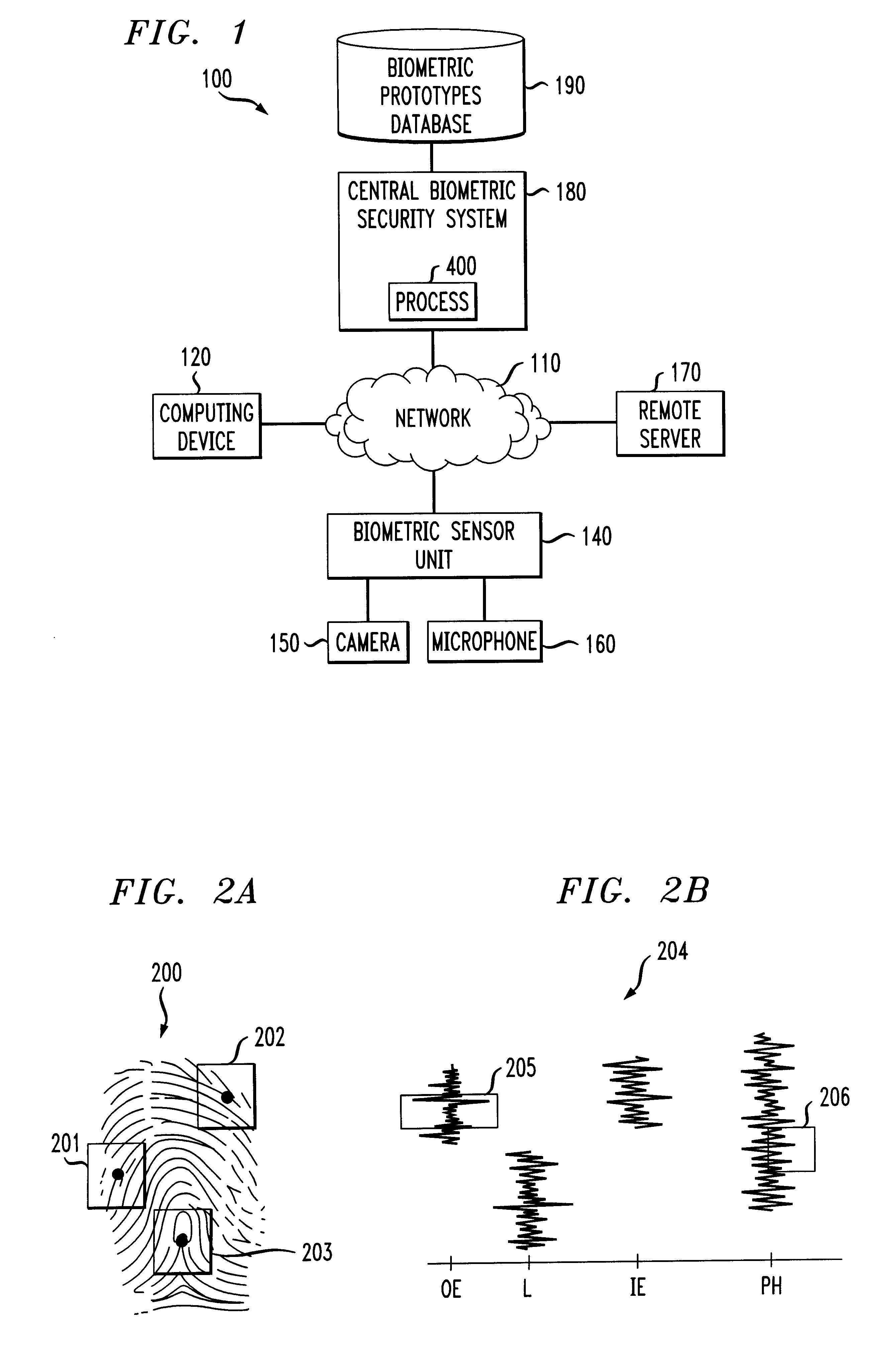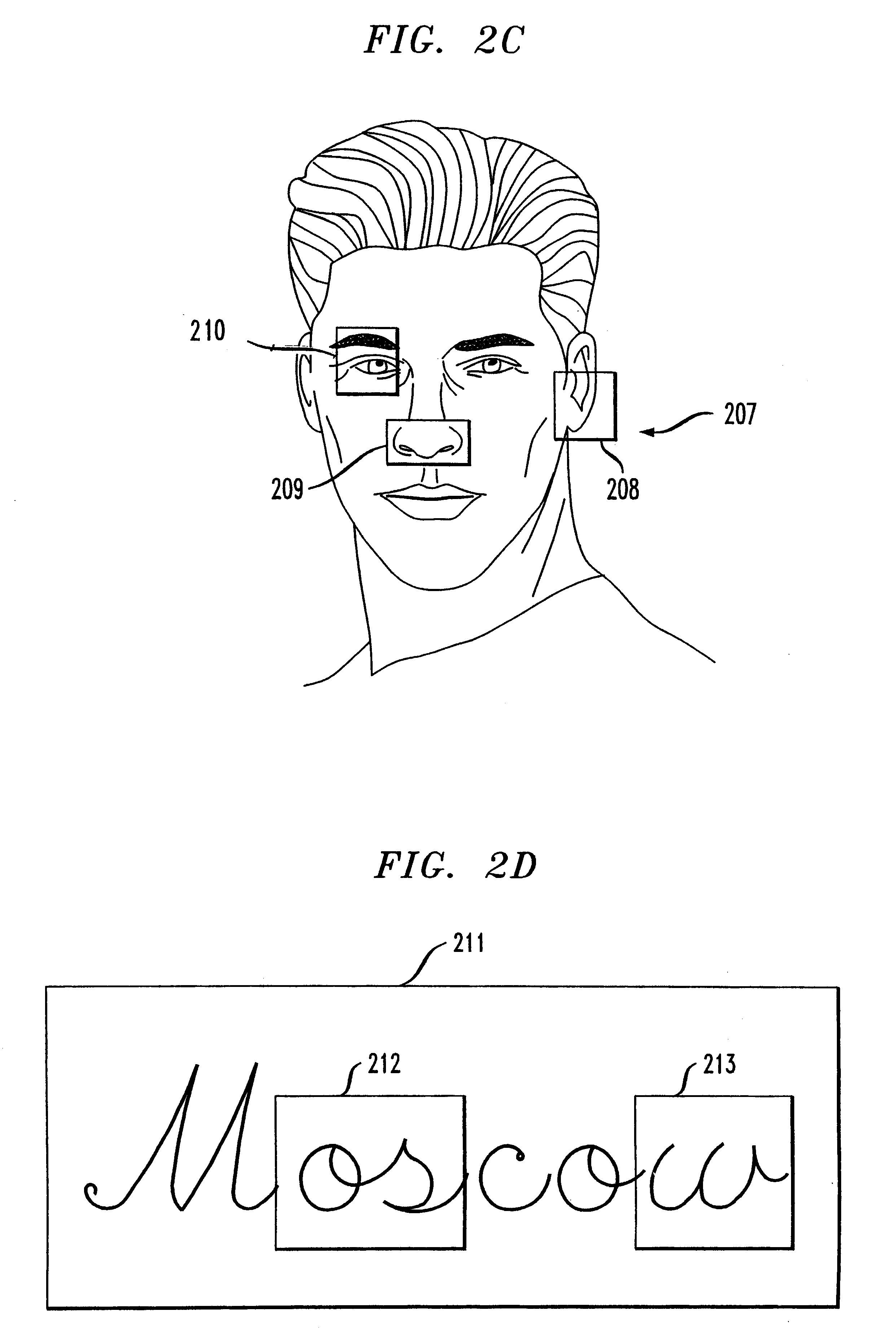Methods and apparatus for restricting access of a user using random partial biometrics
- Summary
- Abstract
- Description
- Claims
- Application Information
AI Technical Summary
Benefits of technology
Problems solved by technology
Method used
Image
Examples
Embodiment Construction
FIG. 1 illustrates a network environment 100 in which the present invention can operate. As shown in FIG. 1, a central biometric security system 180 restricts the ability of a user operating a computing device 120 to access a device, such as a server 170, that is connected to the network 110. It is noted that while the illustrative embodiment of the present invention utilizes a remote biometric security system 180 to restrict access to a remote device 170, the present invention can likewise be applied to restrict access to a local device 170, or to a local secure facility, as would be apparent to a person of ordinary skill in the art.
The biometric security system 180 uses biometric data about the user, obtained from a biometric sensor unit 140, to verify the identity of the user. According to a feature of the present invention, only a portion of the biometric data is used to validate the user's identity. Biometric portions are discussed further below in conjunction with FIGS. 2A thr...
PUM
 Login to View More
Login to View More Abstract
Description
Claims
Application Information
 Login to View More
Login to View More - R&D
- Intellectual Property
- Life Sciences
- Materials
- Tech Scout
- Unparalleled Data Quality
- Higher Quality Content
- 60% Fewer Hallucinations
Browse by: Latest US Patents, China's latest patents, Technical Efficacy Thesaurus, Application Domain, Technology Topic, Popular Technical Reports.
© 2025 PatSnap. All rights reserved.Legal|Privacy policy|Modern Slavery Act Transparency Statement|Sitemap|About US| Contact US: help@patsnap.com



